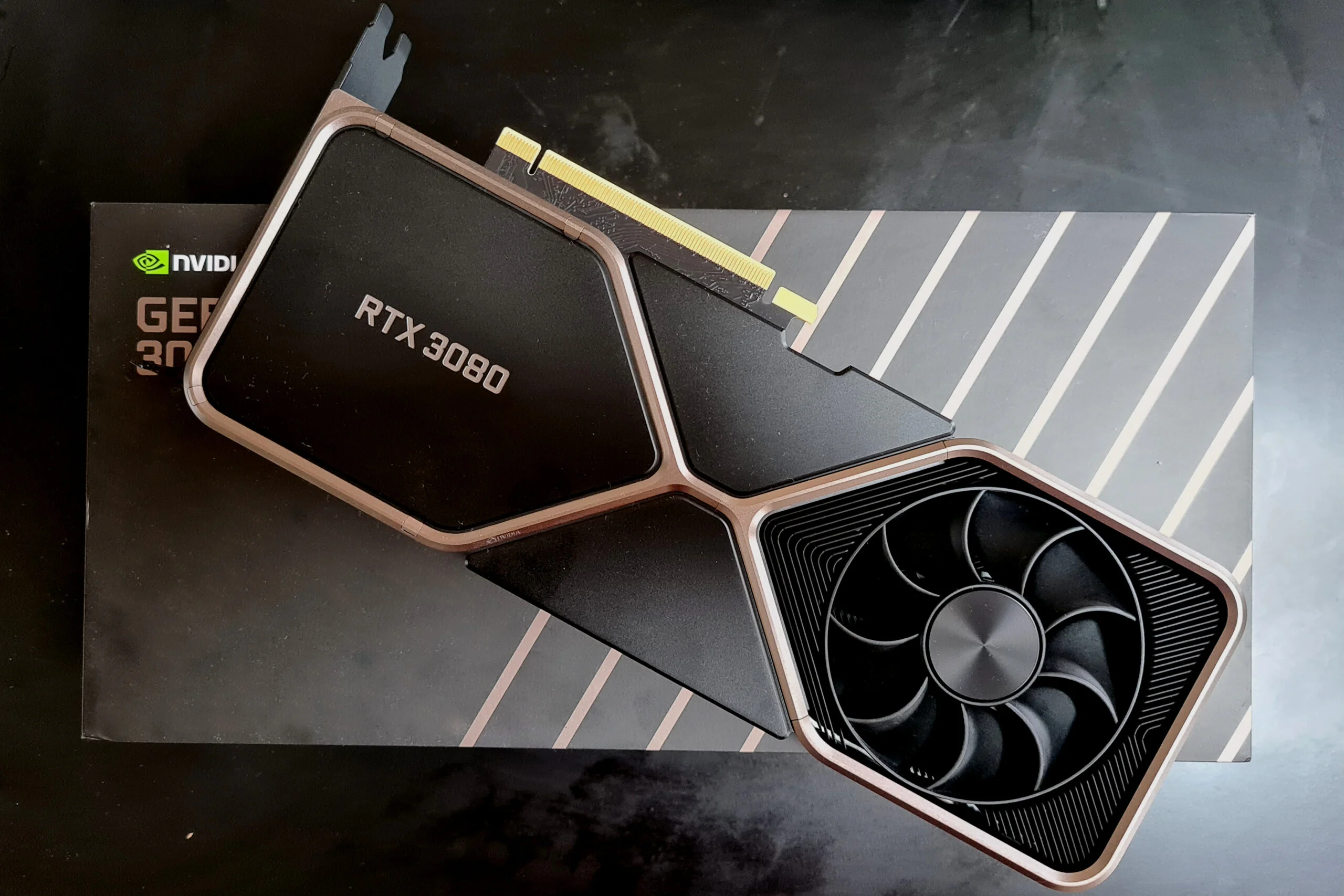Plex is a popular streaming tool that transcodes video on the fly. This process can be taxing on a CPU, so a dedicated graphics processing unit (GPU) can be a welcome addition to any Plex server.
GPUs are also useful for other purposes, such as playing games or running other applications that benefit from accelerated graphics.
When shopping for a GPU for your Plex server, there are a few things to keep in mind.
First, consider the type of GPU you need.
There are two main types:
- discrete and
- integrated
Discrete GPUs are stand-alone cards that plug into an expansion slot on your motherboard, while integrated GPUs are built into the processor itself.
Next, check the compatibility of the GPU with your motherboard.
Some GPUs require special power connectors or slots that may not be present on all motherboards.
Finally, take into account the overall power consumption of the GPU.
A powerful GPU can consume a lot of electricity, so make sure your power supply can handle it.
Table of Contents
Supported Video Formats for Plex
Support formats for Plex include:
- H.264 (Levels 4.1 – 5.2)
- HEVC (H.265) (Levels 4.1 – 5.2)
- MPEG-4 Part 2
- MPEG-2, VC-1
- Resolution: 1080p
- Video codec: H.264 & AAC
- Frame Rate: 30fps
The Best Graphics Cards for Plex Video Transcoding
The following GPUs are some of the best choices for Plex video transcoding:
Nvidia Titan RTX – Powerful Graphics Card for Plex Servers
The Nvidia Titan RTX is one of the most powerful graphics cards on the market, making it a great choice for Plex servers.
It offers excellent performance, with a base clock speed of 1,350 MHz and a boost clock speed of 1,545 MHz.
Plus, it has 24 GB of GDDR6 memory, making it capable of handling even the most demanding Plex servers.
If you’re looking for a powerful graphics card for your Plex server, the Nvidia Titan RTX is a great option.
It offers excellent performance and plenty of memory, making it capable of handling even the most demanding Plex servers.
Plus, its stylish design is sure to complement your other components.
Zotac GeForce GTX 1660 – Top Mid-Range Transcoding GPU
Zotac GeForce GTX 1660 is the top mid-range transcoding GPU on the market.
It offers great value for money with its price tag of about $250 and packs enough power to handle 4K transcoding and gaming.
The GTX 1660 is based on the Turing architecture and features 6GB of GDDR6 VRAM.
It has a base clock speed of 1485MHz and a boost clock speed of 1830MHz.
The GTX 1660 also comes with a new dual fan cooling system which helps keep the card cool even during intense use.
If you are looking for a powerful GPU that can handle 4K transcoding and gaming, then the Zotac GeForce GTX 1660 is the perfect choice for you.
NVIDIA Quadro P2200 – Best GPU for Plex 1080p Streaming
The NVIDIA Quadro P2200 is the best performing graphics card for Plex 1080p streaming.
It offers the best quality and smoothest playback of any video file format, including h.264 and HEVC 10-bit.
The P2200 also supports 4K video at 30fps, which is perfect for those who want to watch their favorite movies and TV shows in Ultra HD.
If you’re looking for a graphics card that can handle Plex 1080p streaming without breaking a sweat, then the NVIDIA Quadro P2200 is the way to go.
It offers smooth playback of any video file format, including h.264 and HEVC 10-bit, and it supports 4K video at 30fps. If you want the best quality at a good price, the NVIDA Quadro P2200 could be a great choice.
NVIDIA Quadro RTX 5000 – High-Quality GPU for 4K Video Transcoding
The NVIDIA Quadro RTX 5000 is a high-quality graphics processing unit (GPU) that is well-suited for 4K video transcoding.
It features excellent image quality and fast performance, making it an ideal choice for those who need to transcode 4K video on a regular basis.
The RTX 5000 also offers good value for money, making it a great option for budget-conscious users.
If you are looking for a GPU that can handle 4K video transcoding with ease, then the NVIDIA Quadro RTX 5000 is a great choice.
How many 4K streams work with these GPUs?
The number of 4K streams that can be handled by each GPU will depend on the specific model and its capabilities.
However, as a general rule, the more powerful the GPU, the greater the number of 4K streams it will be able to handle.
For example, the Nvidia Titan RTX can handle up to 8 4K streams, while the Zotac GeForce GTX 1660 can handle up to 4.
Therefore, if you need to transcode multiple 4K streams on a regular basis, you will need a powerful GPU such as the Titan RTX.
The truth about 4K Transcoding in Plex
What is important when choosing a GPU for Plex?
When choosing a GPU for your Plex server, there are several factors you need to take into account.
How many streams to transcode
First, you need to consider the number of 4K streams you need to transcode.
If you only need to transcode one or two 4K streams, a mid-range GPU such as the Zotac GeForce GTX 1660 will be more than adequate.
However, if you need to transcode multiple 4K streams on a regular basis, you will need a more powerful GPU such as the Nvidia Titan RTX.
Price
Second, you need to consider the price.
GPUs can range in price from around $200 to over $1000, so it’s important to find one that fits your budget.
Features of each GPU
Third, you need to consider the specific features offered by each GPU.
For example, some GPUs come with special features such as support for multiple 4K streams or gaming-specific features.
Brand and warranty
Finally, you need to consider the brand and warranty.
There are many different GPU manufacturers, so it’s important to choose one that you trust.
Similarly, a good warranty is important in case anything goes wrong with your GPU.
How do I transcode FASTER | PLEX Media Server
FAQs – Best GPU for Plex Video Transcoding
Does GPU help with transcoding?
Yes, a dedicated GPU can help with transcoding.
A powerful GPU will improve the performance of your Plex server and allow you to transcode multiple 4K streams simultaneously.
Can I use any GPU for transcoding?
No, not all GPUs are suitable for transcoding.
You will need to choose a GPU that is powerful enough to handle the number of 4K streams you need to transcode.
Can I use my CPU for transcoding?
Yes, you can use your CPU for transcoding, but it will not be as effective as using a dedicated GPU.
A CPU will struggle to keep up with the demands of multiple 4K streams and will likely result in poor video quality.
Is transcoding CPU or GPU intensive?
Both CPU and GPU are important for transcoding.
The CPU is responsible for decoding the video, while the GPU is responsible for encoding it.
Which is better CPU or GPU for transcoding?
There is no definitive answer, as both CPU and GPU have their own advantages and disadvantages.
A powerful CPU will be able to decode video faster, while a powerful GPU will be able to encode it faster.
Ultimately, the best solution is to use a combination of both CPU and GPU for transcoding.
This will give you the best performance and video quality.
Is NVENC better than x264?
NVENC is a newer technology that allows for faster and more efficient video transcoding.
However, it is not necessarily better than x264.
Each has its own advantages and disadvantages, so it’s important to choose the one that is best suited for your needs.
If you need to transcode multiple 4K streams, NVENC will be a better option.
However, if you only need to transcode one or two streams, x264 may be a better choice.
Is Intel Quick Sync better than NVENC?
Intel Quick Sync is a technology that allows for faster and more efficient video transcoding.
However, it is not necessarily better than NVENC.
Each has its own advantages and disadvantages, so it’s important to choose the one that is best suited for your needs.
If you need to transcode multiple 4K streams, NVENC will be a better option.
However, if you only need to transcode one or two streams, Intel Quick Sync may be a better choice.
What is Plex?
Plex is a great way to organize and watch your digital media collection. With Plex, you can access your media from anywhere in the world.
Additionally, Plex offers a variety of features that are perfect for users who need to transcode multiple 4K streams.
However, the free tier only supports one or two streams.
For users who need to transcode multiple 4K streams, the paid tier is necessary.
Additionally, Plex requires a router with an Ethernet port and a broadband Internet connection.
What is the best GPU for Plex?
There is no definitive answer as to what the best GPU for Plex is. It depends on your specific needs and budget.
If you need to transcode multiple 4K streams, a powerful GPU such as the Nvidia Titan RTX will be your best option.
However, if you only need to transcode one or two streams, a mid-range GPU such as the Zotac GeForce GTX 1660 will be a better choice.
Ultimately, the best GPU for Plex is the one that best suits your needs.
What is the best CPU for Plex?
There is no definitive answer as to what the best CPU for Plex is. It depends on your specific needs and budget.
If you need to transcode multiple 4K streams, a powerful CPU such as the Intel Core i9-9900K will be your best option.
However, if you only need to transcode one or two streams, a mid-range CPU such as the Intel Core i5-8400 will be a better choice.
Ultimately, the best CPU for Plex is the one that best suits your needs.
How much RAM do I need for Plex transcoding?
The amount of RAM you need for Plex transcoding depends on the number of 4K streams you need to transcode.
If you only need to transcode one or two streams, 8GB of RAM will be sufficient.
However, if you need to transcode multiple 4K streams, 32GB of RAM will be necessary.
Ultimately, the amount of RAM you need for Plex transcoding depends on your specific needs.
What is the best NAS for Plex?
There is no definitive answer as to what the best NAS for Plex is. It depends on your specific needs and budget.
If you need to store a large amount of data, a powerful NAS such as the Synology DiskStation DS1819+ will be your best option.
However, if you only need to store a small amount of data, a budget NAS such as the Synology DiskStation DS119j will be a better choice.
Ultimately, the best NAS for Plex is the one that best suits your needs.
What are the requirements for running Plex?
In order to run Plex, you will need a computer with an Intel or AMD processor, at least 4GB of RAM, and at least 10GB of free storage space.
Additionally, you will need a router with an Ethernet port and a broadband Internet connection.
Can I use Plex without a TV?
Yes, you can use Plex without a TV. You can use Plex on your computer, smartphone, or tablet.
How much does Plex cost?
Plex has two pricing tiers: a free tier and a paid tier. The free tier offers limited features, while the paid tier offers all of the features.
The free tier is perfect for users who only need to transcode one or two streams. For users who need to transcode multiple 4K streams, the paid tier is necessary.
The paid tier costs $4.99 per month or $39.99 per year.
What are the benefits of using Plex?
Plex is a great way to organize and watch your digital media collection.
Additionally, Plex offers a variety of features that are perfect for users who need to transcode multiple 4K streams.
Plex is a great way to organize and watch your digital media collection.
With Plex, you can access your media from anywhere in the world.
Additionally, Plex offers many benefits for users who need to transcode multiple 4K streams.
Some of the benefits of using Plex include:
- Access to your media from anywhere in the world
- The ability to transcribe multiple 4K streams
- A user-friendly interface
- A variety of features perfect for users who need to transcode multiple 4K streams
What are the drawbacks of using Plex?
Plex has a few drawbacks.
First, the free tier only supports one or two streams. For users who need to transcode multiple 4K streams, the paid tier is necessary.
Additionally, Plex requires a router with an Ethernet port and a broadband Internet connection.
What are some alternatives to Plex?
Some alternatives to Plex include: Kodi, Emby, and MediaPortal.
Kodi is a free and open-source media player that offers a variety of features.
Emby is a media server that offers live TV and DVR capabilities.
MediaPortal is a media center that offers many features similar to Kodi.
Ultimately, the best alternative to Plex depends on your specific needs.
Can Plex use two GPUs at a single time?
Yes, Plex can use two GPUs at a single time.
This allows for better performance when transcoding multiple 4K streams.
Do I need a graphics card to use Plex?
No, you do not need a graphics card to use Plex.
However, a graphics card will improve performance when transcoding multiple 4K streams.
What is the best GPU for Plex?
The best GPU for Plex depends on your specific needs. If you only need to transcode one or two streams, 8GB of RAM will be sufficient.
However, if you need to transcode multiple 4K streams, 32GB of RAM will be necessary.
Ultimately, the amount of RAM you need for Plex transcoding will depend on the number of streams you need to transcode and the resolution of those streams.
Summary – Best GPU for Plex Video Transcoding
The best GPU for Plex video transcoding depends on your specific needs and budget.
If you only need to transcode one or two 4K streams, a mid-range GPU such as the Zotac GeForce GTX 1660 Ti 6GB will be sufficient.
For users who need to transcode multiple 4K streams, a high-end GPU such as the Nvidia GeForce RTX 2080 Ti 11GB is necessary.
Ultimately, the best GPU for Plex video transcoding depends on your specific needs and budget.
Related
- What are the Normal GPU Temperatures While Gaming?
- Best Nvidia RTX 3050 Ti Laptops
- Best Gaming Laptops
- Core i7 vs. i9
- Ryzen vs Intel i5
- 11+ Parts of a Desktop Computer
- Why Don’t Most Laptops Have Touchscreens?
- 4+ BEST Best Water Cooled Graphics Cards [Ranked][Top Picks]
- How to Increase the Mining Hashrate of Your GPU
- How to Fix GPU Artifacting
- Is GPU Water Cooling Worth It?
- 5+ BEST Graphics Cards Under $200
- 5+ BEST Low-Budget Graphics Cards
- 5+ BEST Mid-Range GPUs [Top-Ranked Graphics Cards]






